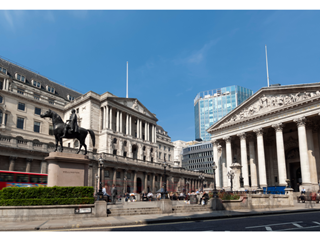
The last time the interest rate was higher was in 2009.
The Bank of England’s (BoE) Monetary Policy Committee voted in favour of raising the base rate from 1.00% to 1.25% today. It means the base rate is now at its highest in over 13 years.
The last the base rate was higher it sat at 1.5% in January 2009. The following month it was lowered to 1.00%.
The decision comes with unemployment figures dropping, but inflation still expected to hit double digits later this year.
The Monetary Policy Committee voted by a majority of six to three to raise the rate to 1.25%. The minority vote prefered to increase the base rate by 50 basis points.
Consumers are facing a cost of living crisis and the back-to-back rate rises are fuelling the mortgage market. Borrowers who lock into a fixed deal can protect themselves from future rate rises, but those building a deposit may not be able to afford a mortgage as interest rates and living costs continue to climb.
Fixed rates are on the rise, with the average two-year fixed rate rising by almost 1% since December 2021. As the rate gap between the average two-year and five-year fixed rate has narrowed, fixing for longer may be a sensible choice. Borrowers could even lock into a fixed mortgage for a decade if they are prepared to commit to such a lengthy fixed term. Seeking advice is sensible to assess the abundance of deals out there to ensure borrowers find the most appropriate choice based on the overall true cost.
Switching from a standard variable revert rate (SVR) to a fixed rate could significantly reduce someone’s mortgage repayment. The difference between the average two-year fixed mortgage rate and SVR stands at 1.66%, and the cost savings to switch from 4.91% to 3.25% is a difference of approximately £4,418 over two years*. A rise of 0.25% on the current SVR of 4.91% would add approximately £700* onto total repayments over two years.
Interest rates on savings accounts are on the rise, which is largely thanks to competition among challenger banks and building societies. Loyal savers may not be getting the best deal and could be missing out on a top rate if they fail to switch. Out of the biggest high street brands, some have passed on just 0.09% since December 2021 and none have passed on all four base rate rises, which equate to 0.90%**. It can take a few months for savers to experience any benefit from a base rate rise, but since December 2021 the average easy access rate has increased 0.26%, so with this in mind, there is still room for improvement. There is no guarantee savers will benefit at all but should they see 0.25% passed onto them, it would mean receiving £50 more a year in interest based on a £20,000 investment.
Savers would be wise to review the top rate tables as there have been notable improvements over the past few months. The best deals today may not have a very long shelf life and some may require certain eligibility criteria to be met. However, if savers are prepared to make the effort, they could stand to earn a much better return on their hard-earned cash than if they have their money stored with a big high street bank for convenience. The market is moving in a positive direction, so it will be interesting to see if more rises follow in the weeks to come.
*Average standard variable rate (SVR) is currently 4.91%. Calculations based on a £200,000 mortgage over a 25-year term on a repayment basis.
**Brands considered as the biggest high street banks include Barclays Bank, HSBC, Halifax, Lloyds Bank, NatWest/RBS, and Santander. Out of these, the following brands have not increased rates by 0.90% on these selected easy access accounts since the December 2021 base rate rise: Barclays Bank (Everyday Saver pays 0.01% at £10k gross), Halifax (Everyday Saver - pays 0.25% at £10k gross, up from 0.01%), HSBC (Online Bonus Saver - pays 0.45% at
£10k gross when no withdrawals made, up from 0.05% and Flexible Saver - pays 0.10%, up from 0.01% at £10k gross), Lloyds Bank (Easy Saver – pays 0.20% at £10k gross, up from 0.01%), NatWest/RBS (Instant Saver - pays 0.10% at £10k gross, up from 0.01%), Santander (Everyday Saver - pays 0.10% at £10k gross, up from 0.01%).
Information is correct as of the date of publication (shown at the top of this article). Any products featured may be withdrawn by their provider or changed at any time. Links to third parties on this page are paid for by the third party. You can find out more about the individual products by visiting their site. Moneyfactscompare.co.uk will receive a small payment if you use their services after you click through to their site. All information is subject to change without notice. Please check all terms before making any decisions. This information is intended solely to provide guidance and is not financial advice. Moneyfacts will not be liable for any loss arising from your use or reliance on this information. If you are in any doubt, Moneyfacts recommends you obtain independent financial advice.